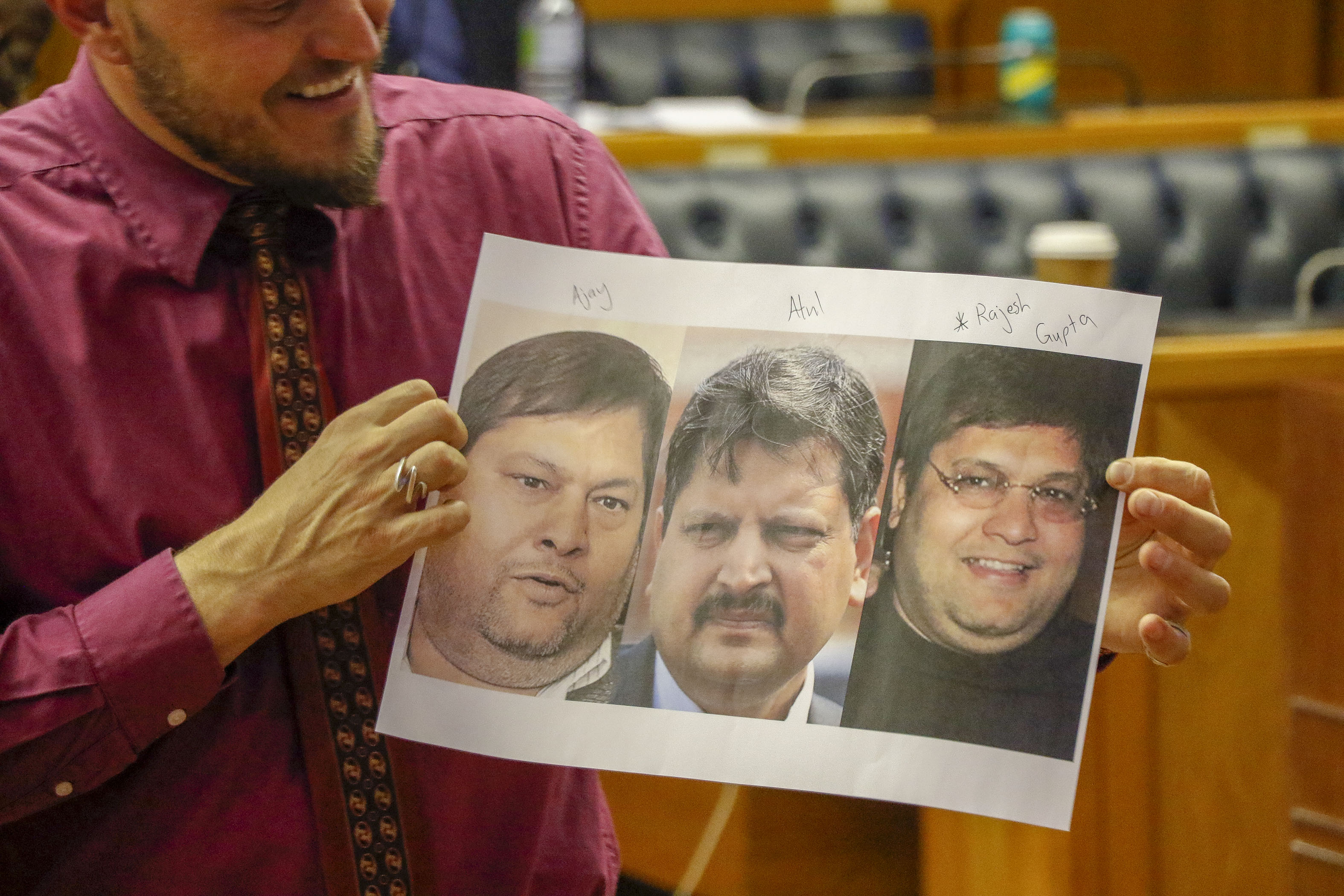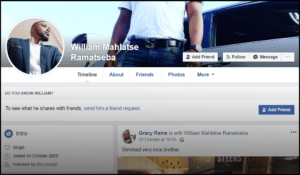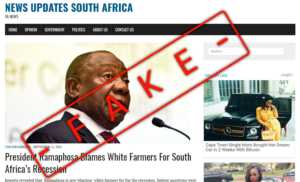Disinformation, dissected

CAPE TOWN, SOUTH AFRICA – SEPTEMBER 13: A poster with three Gupta brothers is presented before Parliament’s Portfolio Committee during Home Affairs minister Malusi Gigaba’s appearance over naturalisation of some members of the Gupta family on September 13, 2018 in Cape Town, South Africa. Gigaba said he was disappointed that he did not get to tell his side of the story in granting citizenship to members of the Gupta family. (Photo by Gallo Images / Netwerk24 / Adrian de Kock)
In mid-2017, two teachers from Durban’s KwaMashu informal settlement were forced to hide from their own community after social media posts were shared, accusing them of trading in body parts. Their pictures were posted alongside those of human body parts, and the text made it clear that these were the people responsible. The posts were false, and the originator of the claims unknown.
This came hot on the heels of acts of xenophobic violence in the same informal settlement, prompted by viral posts claiming that foreign nationals were responsible for abducting children in the community. This too, was based on fabricated stories, or “fake news”.
The term fake news has surged in recent years. Prior to November 2016, the terms hovered at an interest score of between three and six on Google’s search trends
This exploded in November 2016, when United States President Donald Trump used the term against publications critical of his campaign. The term was searched ten times as many times as before Trump’s statements. But the term itself may be incorrect, despite its ubiquity.

First Draft – a project of the Shorenstein Center on Media, Politics and Public Policy at Harvard University’s John F Kennedy School of Government – researches the phenomenon of disinformation and its publication online.
First Draft has published a field guide for understanding and reporting on disinformation. It differentiates between forms of “fake news” based on two criteria: falseness, and the intent to harm. This construct identifies three distinct forms of “fake news”:
- Misinformation is unintentional inaccuracies. Incorrect dates, mismatched photographs and errors in translation are grouped under this. Satire, when taken as real news, also falls under the ambit of misinformation;
- Disinformation is deliberately false information created with the intent to deceive. Most traditional fake news websites and hoax messages would fall within this definition;
- Malinformation is objectively true content published with harmful motives. Revenge porn, doxing and quotes deliberately taken out of context fall within this definition.
South Africans have seen their fair share of the above.
In 2016, the Guptabots – hundreds of social media accounts created by foreigners impersonating South Africans – descended on Twitter. These Guptabots came to the defence of the controversial Gupta family, unleashing a barrage of abuse against their detractors, and amplifying messages vindicating them.
This escalated early in 2017, when the WMCLeaks and Voetsekblog websites were created. Both websites were aimed at distributing political propaganda hoping to polarise South Africa along racial lines, directing the discourse away from the Guptaleaks that emerged at the same time. WMCLeaks posted an “expose” of former Business Day editor Peter Bruce, in the process also disclosing the ID number, address and phone number of an acquaintance the site alleged was his mistress.
Globally, false WhatsApp messages in July this year spread rumours of child abductions in India, which saw mobs of angry community members lynch and kill more than 20 people. Pictures of a model in a bikini shared on social media claimed to be snaps of Croatian President Kolinda Grabar-Kitaravic, and were later proven false.
This rise in disinformation, both locally and abroad, has prompted the European Union to set up a high level group of experts to advise on ways to counter the spread of disinformation online. The resulting report recommended a multi-faceted approach to dealing with the spread of disinformation online:
- Enhance the transparency of online news and its circulation;
- Promote media and information literacy in the public domain;
- Empower users and journalists to tackle disinformation;
- Safeguard the diversity and sustainability of the news media ecosystem; and
- Continued research.
Exposed sets out to achieve some of these objectives by identifying, and exposing, the anonymous individuals behind these websites. By making these persons known, we hope they will be held accountably for the part in distributing disinformation.
The investigations presented here hope to lift the veil and reveal these websites’ motivations and methods, and will hopefully serve as an inspiration for members of the public to do the same.
The tools and techniques used during the investigations will also empower those with the eagerness, but without the necessary know-how, to dig deeper into the origins of disinformation sites.




